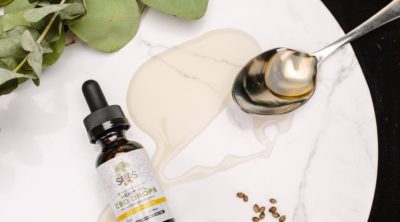
Pygeum bark is obtained from an evergreen tree found in Africa. Let us look at its benefits, side effects, preparation method, recommended dosage, etc.
Today, many people are looking for more natural solutions to treat various disorders as allopathy tends to have some long-term side effects. Among many alternative medicine practices, one of the popular one is herbal medicine. In this article we will discuss in detail about herbal medicine, pygeum bark.
Origin
Pygeum goes by the botanical name Pygeum africanum. Commonly, it is also known by other names like red stinkwood, African plum, African prune, natal tree, kirah, etc. This is an evergreen tree which looks similar to a cherry tree. It grows 150 feet tall and belongs to the Rosacea family. After the flowering in summer is finished, it bears red-brown fruits that resemble plums. This fruit ripens from June to August in Northern African regions and then in the Southern countries. The fruit is used by the local birds, animals, and native people as food. The wood from this tree is thick and is used for building and making tools and also as a fuel. As the bark of this tree is growing in demand, this tree has become endangered.
Contents
The bark contains phytosterols which have an anti-inflammatory property. It works by inhibiting the production of pro-inflammatory prostaglandins in the prostate. It also contains pentacyclic triterpenes which prevents swelling. Also, the ferulic acid esters present in it reduces the prolactin levels and prevents the accumulation of cholesterol in the prostate.
Benefits
It is believed that pygeum’s bark can be used to treat many disorders. One of the disorders for which it is widely used is benign prostatic hyperplasia (BPH). It is also useful to increase urinary function, which often becomes limited due to enlarged prostate condition. It is also used to treat the symptoms of prostate cancer and chronic prostatitis. Traditionally, this tree’s bark extract was used to treat genitourinary problems. Certain studies show that it can also be used to treat other conditions like impotence, fever, kidney diseases, hair loss, urinary tract infection, sexual performance, malaria, prostatic adenoma, and psychosis. When this herb is mixed with saw palmetto and stinging nettle root the effectiveness of each herb is increased. Hence, many times people combine these herbs while treating various conditions.
Dosage
Pygeum bark is typically taken in tincture form. It is also combined with saw palmetto and stinging nettle root to treat BPH. It can be found in capsule form too. It can also be used to make a tea, however, this is not preferred by many due to its unpleasant flavor. The recommended dosage of the pygeum extract is 100 milligrams. For 60 days a person should follow this dosage.
Side Effects
The symptoms of BPH and prostate cancer are similar, so if you are thinking of using this bark extract for enlarged prostate treatment then make sure you get the condition diagnosed first. There are not many side effects associated with it. However, in rare cases side effects like stomach upset, nausea, headache, and visual disturbances have been noticed when the first dose is taken.
If you are going to use this as an alternative medicine make sure you consult your doctor first. Also, it is important that you follow the recommended dosage, to avoid any side effects and use the extract for recommended time to get its health benefits.
Disclaimer: This Buzzle article is for informative purposes only, and should not be used as a replacement for expert medical advice.


